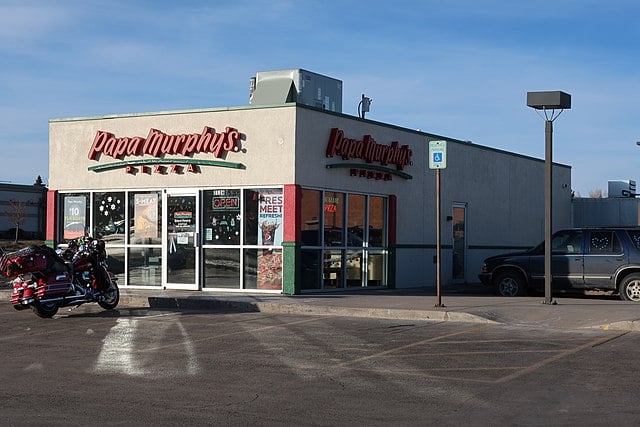Papa Murphy’s is shrinking again. The take-and-bake pizza chain has closed nearly 150 U.S. stores over the past two years — a slow contraction that shows no sign of stopping.
Owned by Canada’s MTY Food Group, the brand has spent the last year pruning underperforming locations to focus on markets that still have momentum. CEO Eric Lefebvre said the cuts are part of a broader effort to “strengthen the brand and position it for long-term success.”
Papa Murphy’s model has always been unusual. Instead of handing you a hot pizza, it sends you home with one you have to bake yourself. “We make it fresh. You bake it to perfection,” the company explains on its website. For years, that twist worked — offering lower overhead and fresh ingredients at take-out speed. But as delivery apps took over, convenience won.
Lefebvre admitted that part of the recent decline comes down to franchisees who stopped spending on local marketing. “Pizza is very marketing-driven,” he said. “As soon as you close the tap, you see the sales going down right away.”
In 2023, Papa Murphy’s closed 43 locations. By the third quarter of 2024, another hundred had disappeared, most of them franchise-owned. Some stores shut because the company didn’t have the infrastructure to keep them running while finding new operators.
The CEO insists the worst is likely over. “Will there be more store closures in the future? Probably a few,” he said. “But you’re not going to see closures of the magnitude we’ve seen in the last two years.”
Across the pizza industry, the picture isn’t much brighter. Technomic data shows that 61 percent of major pizza chains saw sales drop in 2024. MOD Pizza closed 27 restaurants, Pizza Hut shuttered dozens after a franchise dispute, and Domino’s cut over 200 globally, mostly in Japan. Inflation, rising wages, and price-sensitive diners have eaten into profits everywhere.
Papa Murphy’s franchisees still face steep costs. A store typically brings in about $636,000 in annual sales, with startup investments ranging from $367,000 to $733,000. That margin leaves little room for error when traffic dips.
For now, Lefebvre’s plan is simple: fewer stores, stronger operators, and renewed local marketing. The brand isn’t giving up — just tightening its circle.
It’s a quieter kind of comeback. And for a pizza you still have to bake yourself, maybe that fits.
Source: TheStreet

